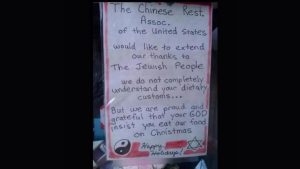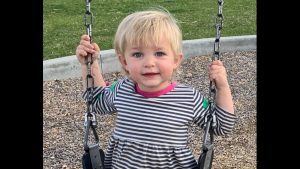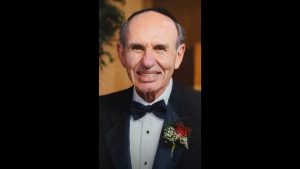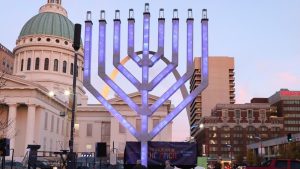St. Louisan who made aliyah brings ‘flash mob’ to Israel
Published October 2, 2013
When Marvin Casey disembarked from the direct El Al flight to Israel, he was flying solo. The St Louis, MO. native, an African-American who converted to Judaism in his early 20s, had no family to greet him, no friends to hang out with, no Hebrew to chat in, no apartment to live in and no job to go to.
That was six years ago. Today, Casey (with a wife, a son and a daughter, two jobs and a mortgage) quite literally has streets full of Israelis following his every move and listening to his every (Hebrew) instruction.
The young man, who did not know his smol (left) from his yemin (right,) let alone from his lehazeez et hatachat! (shake your booty!) is, today, Israel’s go-to guy for organizing flash mobs.
A self-taught hip-hop artist, Casey is the one who gets out there, in the middle of, say, the outdoor Mamilla mall in Jerusalem, and starts dancing — all by himself. A rock of the hip, perhaps. An arm lifted, taut, in the air. A smooth body wave along the ancient stones.
He is the one who the others — regular Shlomos and Chanas in jeans or miniskirts who, until just a moment earlier, seemed to be just shoppers or cafe-goers — get up to join. He is the one who choreographs the dance steps they all do, in unison. And he is the one who chooses the music that gives it its beat.
“Israelis have no problem just starting to dance, or to party. They don’t need a drink, and they don’t care how they look. They are all about ‘Let’s have fun!’ says Casey. “It’s one of the most beautiful things about the people here and perfect for flash mobs, which are all about fun.”
The pull of Judaism
For Casey, 32, life started as far away as one can get from Jerusalem’s Ben Yehuda Street, where he choreographed and led the first documented Israeli flash mob a week before Hanukkah in 2009.
The son of a United States Postal Service worker and an independent claims agent, Casey grew up in a warm, Midwestern Christian family. He went to the local public school, listened to Marvin Gaye and The Four Tops, was something of a jock and liked to dance — but mostly, he says, just at family get-togethers, when his uncles would crank up Michael Jackson.
Happy, but searching for something more, Casey started reading about religion and going to synagogue with Jewish friends. When he was 21, he decided that he, too, was meant to be Jewish. He converted through Congregation B’nai Amoona, near his home, emerging from the mikveh 18 months later with a new Hebrew name, Yisrael Moshe Chaim, and a yearning for Zion.
Just out of Southern Illinois University, in Edwardsville, where he had studied fine arts, Casey came to Israel, as do many young Jews who know a good-free-thing when they see it, on Birthright, the program that offers Jews, typically those with little affiliation with Israel, a 10-day whirlwind tour of the country.
Post-Masada and back in the U.S., dabbling in the St. Louis dance scene – practicing hip-hop, choreographing some break dance, doing swing and, yes, going to Israeli folk dances – Casey couldn’t get Israel out of his mind. In June 2007, with the blessing of his puzzled but still trusting family, he set off to start afresh, in Jerusalem.
There, he attended ulpan by day, and roamed around the capital’s – some might say underwhelming – dance and music clubs by night.
“I didn’t drink or do any drugs, I was just looking for a dance,” he says. “I would hear music and just walk in and join the people bopping around.
That’s the way I rolled.” And, no, the clubs were not that impressive, he admits. “The scene in Jerusalem was dead. When I started dancing, people would swarm around. You would have thought Justin Bieber had entered the room.”
It was only a matter of time before Casey became a known figure on the dance scene. He began teaching hip-hop at various Jerusalem dance studios, choreographing for his own hip-hop troupe and getting parts in local dance shows and musicals.
In all respects, he was settling in. He spent five months in the Israeli Defense Forces, went back to school to get a teaching degree (to be able to
teach high school English, alongside his dancing) and, most importantly, he fell in love with Oshrat Kidron, a half-Russian, half-Moroccan English teacher from an Orthodox Jewish home in Petach Tikva. He proposed, in Hebrew, over Passover. Encouraged by Kidron’s family, Casey re-converted through the Orthodox rabbinate, which is the only officially recognized conversion body in the country, and the young couple headed to the chupa. Today, they have a two-year-old son and, as of Sunday, a baby girl.
Flash mobs begin
Casey’s flash mob period started with a phone call from a representative of Nefesh B’Nefesh, the non-profit organization that promotes aliyah from North America and Britain. They wanted him to pull together something special for Hanukkah in order to draw attention to their
organization and its message.
“I had never done a flash mob before, but then again, they had no idea at all how to organize it,” says Casey. The first creative difference with his sponsor, he remembers, was over music: “They wanted to use ‘Dreidle, Dreidle, Dreidle’ as the song;I said ‘There is no way on God’s great earth I am choreographing a dance to that.’”
The subsequent flash mob – set to the compromise tune of Eric Schwartz’s “Hanukkah Hey Ya!” a remix of the 2003 OutKast song “Hey Ya!” – as a major success, with over 150 people, trained by Casey just an hour earlier, taking part in the three-minute dance he choreographed. A video of the flash mob got over a million views on YouTube.
Since then, Casey has organized several dancing flash mobs a year, mainly in Jerusalem, and often using students from Studio Shesh, in Talpiot,
where he regularly teaches. It’s not restricted to the students though; anyone can show up –and they do, having heard of the event through word of mouth or via social media.
Sometimes the mob-to-be will meet up right before the event, to get organized and learn the steps. At other times, Casey will post a video of the
dance online, where participants can, with a password, learn the steps. “We do a lot of big arm movements, to catch the eye, and moving from side to side for visual effect. You have to keep these things simple,” explains Casey.
“Normally, it’s non-dancers who come, just looking for something fun to do,” says Casey. “And then, just as often, being in a mob gets them hooked, and they show up for classes after.”
“Flash mobs are an important tool in spreading dance,” he concludes. “Being part of group where everyone is on a different level, takes away the stress. No one feels intimidated, because you get lost in the mob,” he concludes. “Anyone can join.”
So, the next time you find yourself having coffee in Jerusalem or sitting peacefully on a bench in Haifa and happen to see a handsome black man in a baseball cap with a kippa peeking out underneath suddenly launch into the moonwalk – don’t hesitate. Jump in. Join the mob. It’s all about the fun.
Story and photo © Haaretz; Reprinted with permission.














